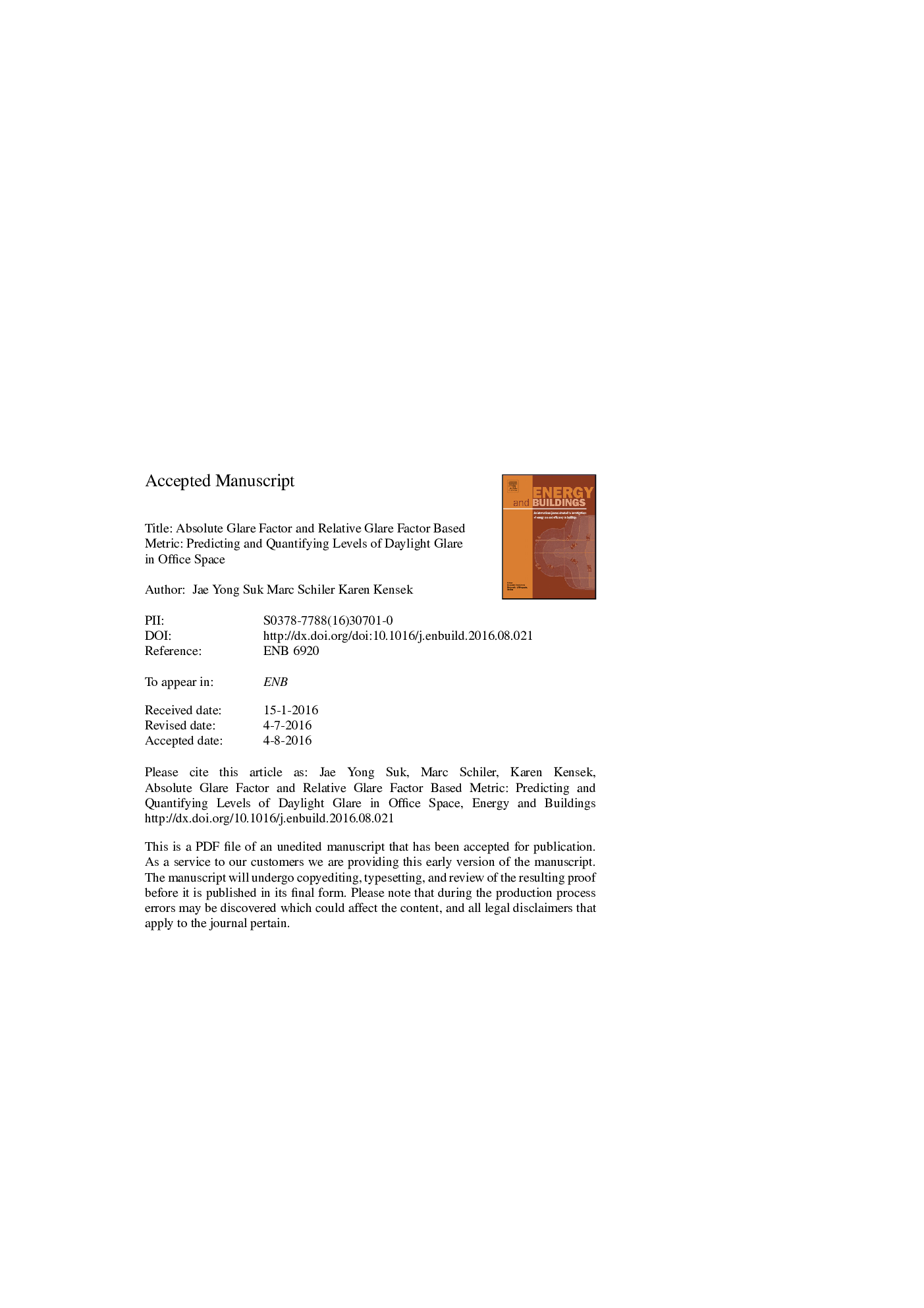| Article ID | Journal | Published Year | Pages | File Type |
|---|---|---|---|---|
| 4919571 | Energy and Buildings | 2016 | 31 Pages |
Abstract
Extensive human subject research was performed to develop a daylight glare analysis methodology that correlates the Absolute Glare Factor (AGF) and the Relative Glare Factor (RGF). Literature reviews compared existing luminance thresholds developed by different research groups. More than 450 subjective data and visual scenes have been collected and analyzed to develop a new method. A HDR image analysis tool was developed in MATLAB to calculate luminance values and detect potential glare sources in digitally captured glare scenes. It was determined that using the human eye's field of view (FOV) improves the discomfort glare evaluation performance. Luminance and glare ratio thresholds were defined in statistical analysis software. In addition to the newly defined luminance and contrast thresholds for different office task types, an AGF- and RGF-based glare equation was developed to evaluate and report perceived glare levels. AGF and RGF dominant zones were displayed on a scatter plot graph to visually explain which glare factor is more dominant to cause discomfort glare. This overall approach can help users to understand a cause of daylight glare and find solutions to avoid glare issues, which would ensure occupant's visual comfort in buildings.
Keywords
Related Topics
Physical Sciences and Engineering
Energy
Renewable Energy, Sustainability and the Environment
Authors
Jae Yong Suk, Marc Schiler, Karen Kensek,
